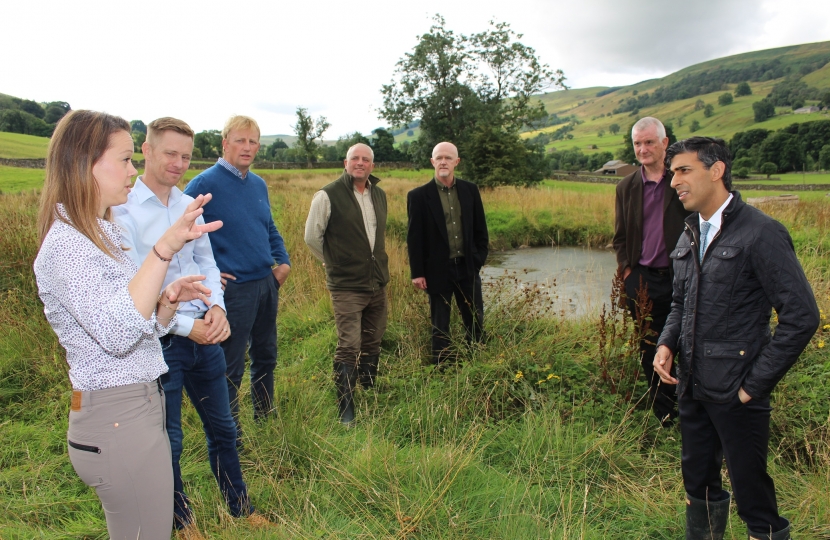
I was in beautiful Bishopdale recently seeing how natural flood management techniques are helping build resilience against future flood events
Inevitably, my mind was drawn back to the events of just over two years ago when the Yorkshire Dales were hit by a deluge of Biblical proportions. The volume of rainfall this part of the world would typically experience in a month was dumped on Swaledale, Arkengarthdale and lower Wensleydale in little more than two hours.
The impact of that rainfall was devastating with 300 homes, 30 businesses and 50 farms affected to at least some degree. And many people and businesses are today still recovering from the financial and emotional impact of what was a catastrophic event.
My priority then was to make sure people had the support they needed to do that – and I was pleased to help secure a package of almost £5.5m to cover the cost of road bridges swept away, farmers’ uninsurable losses, local councils’ costs and the bills faced by individual households and businesses.
However, the psychological scarring of what happened that day back in July 2019 cannot, of course, be healed solely by cash. Many victims have told me of their fears that these “once in a lifetime” events are happening more frequently and they wonder if they will be victims once more.
Which is where the Bishopdale project – and others like it – are so important.
A large number of relatively small interventions in the landscape – planting trees, creating riverside buffer strips and leaky dams – can make a difference to how much water gets held back on higher ground when the heavy rain falls.
I asked one of the farmers involved what the impact had been for him. Andy Whitell told me while the project had only just been completed he had already noticed how the amount of flooding in his yard had significantly reduced.
It is this slowing of the flow of water from high ground that is key to protecting communities immediately below and also much further down the catchment in places like Boroughbridge and York.
The Bishopdale project has been directly funded by Government through the Department for the Environment, Food and Rural Affairs and there are many more like it in North Yorkshire.
One is in Arkengarthdale and Swaledale – the area worst affected two years ago – with work due to start this Autumn.
The £20,000 scheme will create a natural flood management demonstration site and encourage landowners in Swaledale to undertake measures to prevent flooding in local communities, increase biodiversity and improve water quality.
As in Bishopdale, habitat creation will include ponds, scrapes (temporary ponds), hedgerows, bankside trees and woodland with the aim of holding more water back to protect communities like Reeth, Fremington and Grinton.
There will be volunteering opportunities to help with work on the ground including tree and hedgerow planting with the Yorkshire Dales Rivers Trust – the charity behind the successful Bishopdale project – leading the initiative.
I fully support and actively encourage schemes like these which enable local communities to contribute to building resilience and help make the devastating events of two years ago less likely.
